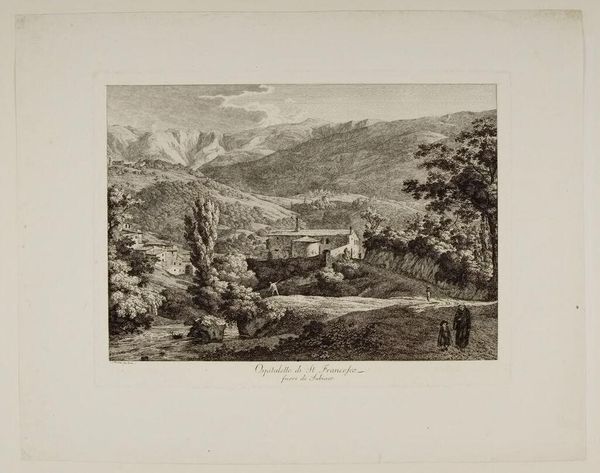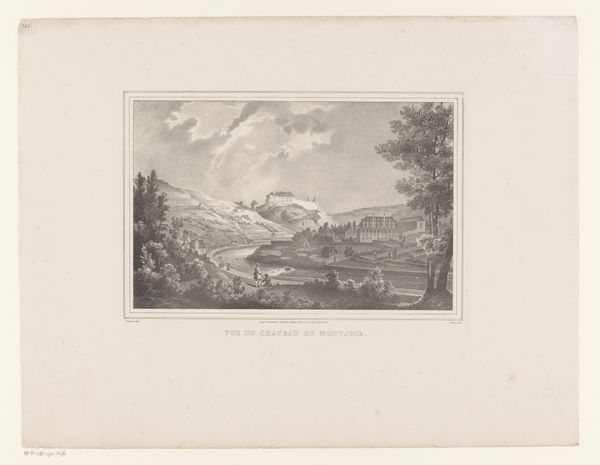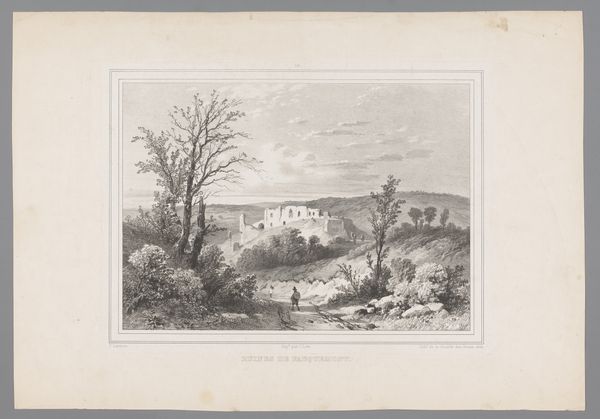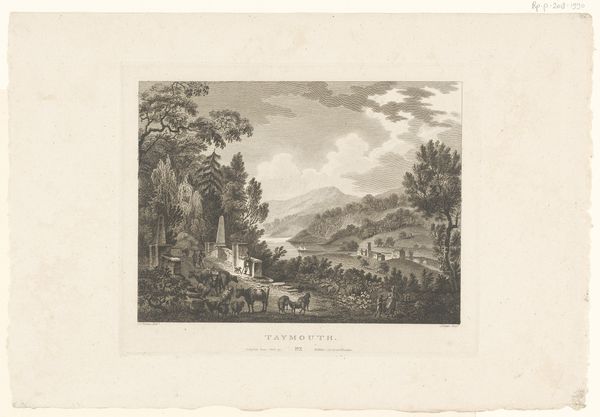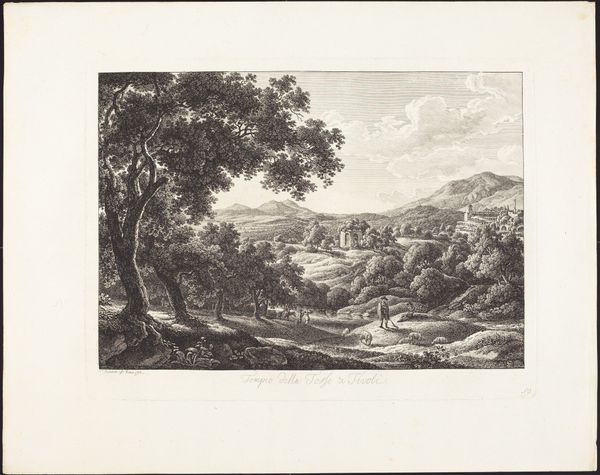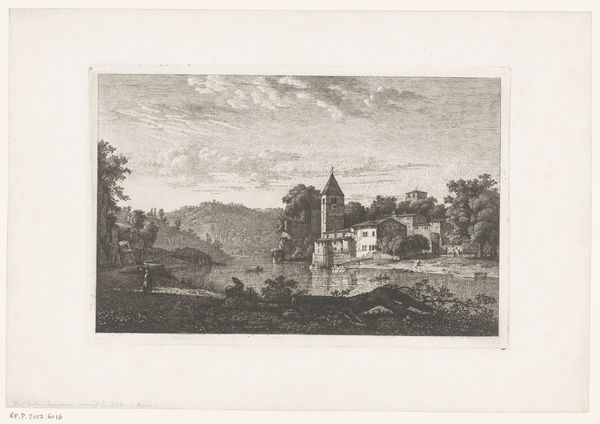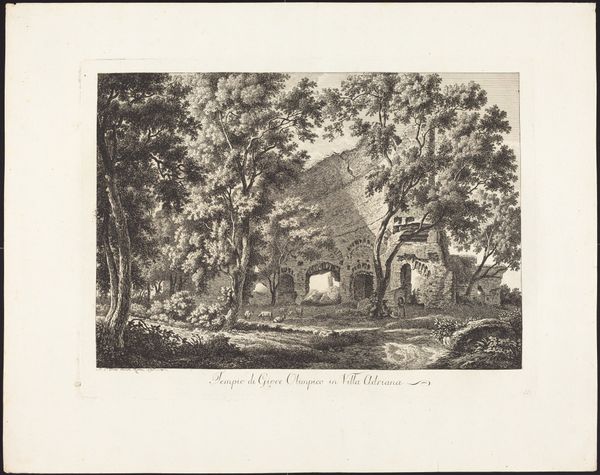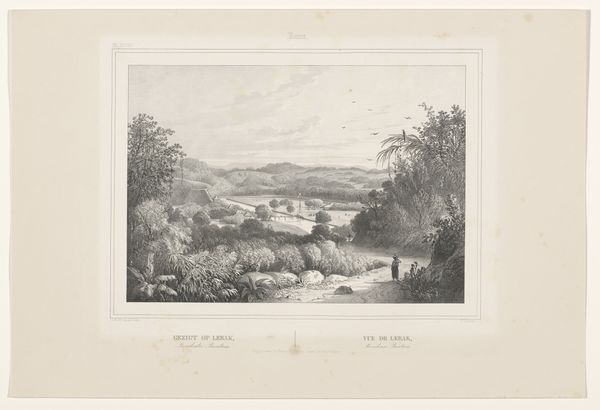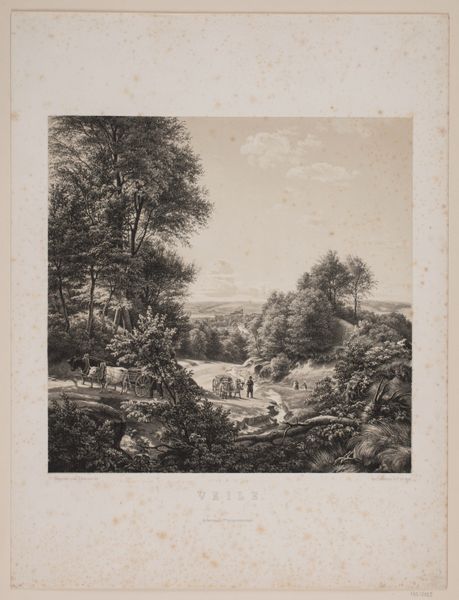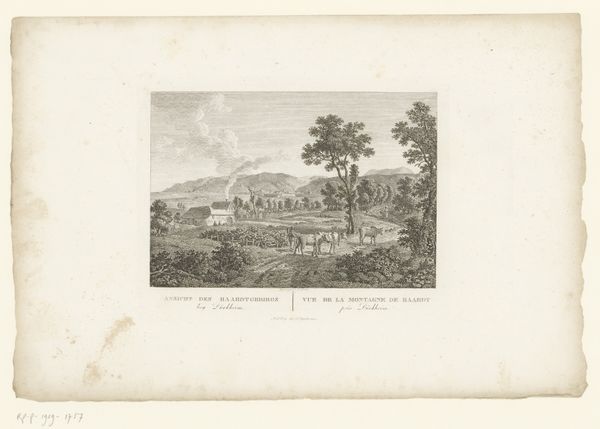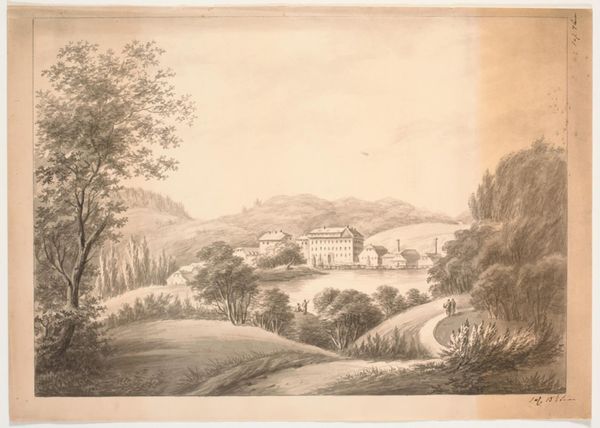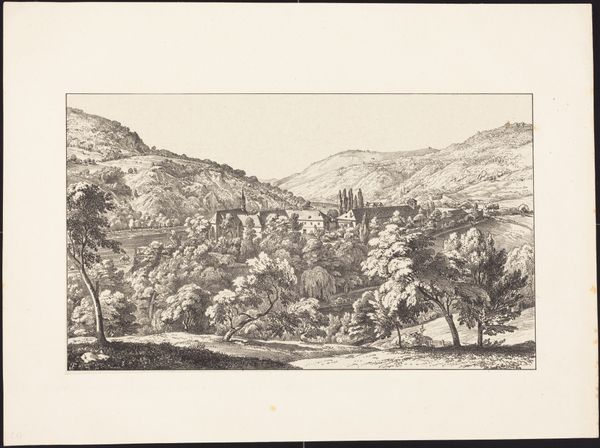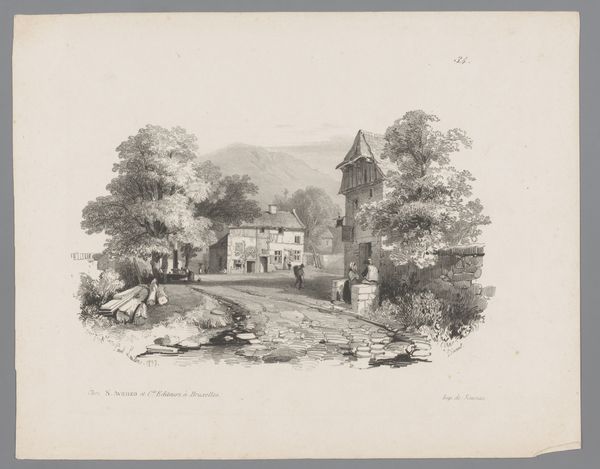
print, engraving
#
neoclacissism
# print
#
landscape
#
engraving
#
realism
Dimensions: plate: 28.1 x 37.4 cm (11 1/16 x 14 3/4 in.) sheet: 39.1 x 49.1 cm (15 3/8 x 19 5/16 in.)
Copyright: National Gallery of Art: CC0 1.0
Curator: So, here we have Jacob Wilhelm Mechau's "Ospitaletto di San Francesco, fuori di Subiaco," an engraving from around 1795. Editor: It's beautiful. I am captivated by the details that he was able to achieve through engraving. What are some interesting aspects about this work? Curator: Well, focusing on the material reality, consider what engraving on a copper plate meant. Think about the labour involved. Mechau had to physically carve every single line into that plate, reversing the image. The amount of labour shaped what the final product became and what he was able to depict. How do you think the constraints and possibilities of the engraving process influenced Mechau’s representation of the Italian landscape and the people within it? Editor: The intricacy suggests patience and intense focus. Does this level of detail align with a broader trend in the art of his time? Curator: Absolutely. Think about Neoclassicism as an art movement. What was valued? Rationality, order, and a certain idealized aesthetic were all valued. Also, the rise of printmaking made art more accessible, it changed the way art was consumed and circulated in society, as the value and creation of art began to shift from being a one-off creation to a mass-producible artifact. Editor: That’s fascinating. The connection between accessibility and the democratization of art... it reframes how I understand the work itself. Curator: Exactly. We’re seeing how the conditions of its creation and distribution are vital to interpreting the meaning of this landscape. It gives more meaning and a historical connection to how the work evolved. Editor: I definitely look at it differently now, understanding not just the aesthetic, but the material reality and social context of its making.
Comments
No comments
Be the first to comment and join the conversation on the ultimate creative platform.
